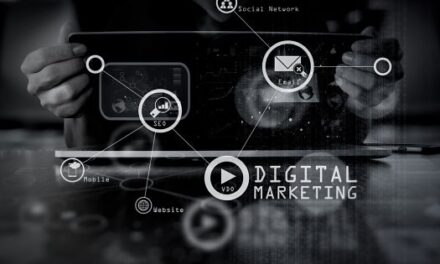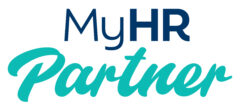Hybrid Teams occur where there is a combination of ‘work from elsewhere’ and ‘work in a common physical space’ in place.
The ADP Research Institute reveals that 52% of workers would take a pay-cut to ensure flexible working arrangements. Plus 7 in 10 workers would quit if they were made to return permanently to the office. Hybrid work is here to stay. Let’s get it right! Here is a comprehensive checklist to do just that.

Successful hybrid teams start with leadership empathy
There are many advantages:
-
Increased employee happiness and productivity
-
Reduced travel burden on employees
-
Reduced office space requirements for employers.
There are also disadvantages:
-
Increased individual isolation
-
Increased tendency to siloed operations
-
Decrease in group flow and incidental innovation and creativity
-
Difficulty in building team cohesion and psychological safety.
Let’s build on the strengths and minimise the risks.
Purpose
Ensure your team’s purpose is crystal clear, easy to understand, and linked to the organisation’s purpose and results.
Results
Identify clearly the key outcomes your team is focused on. These are NOT projects we will get to those later. These are outcomes – things that happen, benefits that occur, from your efforts as individuals and as a team.
Examples: Customers are delighted with our service. The Government trusts our advice. Members renew their membership automatically.
Structure
This is especially important for hybrid teams. Clarify:
-
Measures: how you are measuring progress towards your results
-
Decision-making process
-
Communication channels
-
The purpose of each communication platform. For example: Use Microsoft Teams for chit chat and quick updates. Use text messages for urgent information. Use email for Actionable items.
-
Visible progress: create online documents/platforms so all team members can see the progress of tasks. This is especially important for interdependent tasks and projects. You can use something like Gantt chart or Trello for that.
-
Responsibilities: make sure this is clear and visible too: who is doing what by when.
Strengths
As with any team, individuals feel engaged when they are developing and mastering their strengths.
-
Know your team members strengths. Use a profiling instrument (we love DiSC, the Leadership Maturity Framework, and the Complete Values Profile) to do this.
-
Have each member share their expertise and background experience that is relevant to the team’s mission. This will have an additional benefit of increasing cognitive trust in the team.
-
Share the facilitation role around to build team members’ ability to self-organise.
Safety
-
Every team needs to build safety. The first phase according to George Karseras, author of Build Better Teams, is to Get Set: build cognitive trust. We did this when we shared experience and expertise, so that each team member knows the ability of the others.
-
The next phase is to Get Safe: build an understanding of who we are as human beings. This is where your skills as a facilitator come in, especially if your team is working more remotely than in person. You need to build time into every online meeting to build connection before diving into content. Use simple icebreaker questions to share an insight about each person. Example: What are you looking forward to right now? What is in front of you but out of sight of the camera? What are you wearing on your feet right now?
-
Model owning up to mistakes and learning from them. This will encourage the practice of looking at upsets and using them as learning experiences. This kind of vulnerability helps lower distrust and build more intimacy with group members.
Leadership success needs strong leadership habits
Hybrid Team Practices
-
Develop rituals for both your online gatherings and your in-person ones. This helps build team identity and a sense of belonging.
-
Each meeting needs a specific purpose: idea generating, decision-making, trouble-shooting, celebrating. This will help leverage the energy of the group as they can focus on one brain process at a time. It will also help keep them short and sharp.
-
Vary the delivery. With online tools, there is a heavy reliance on auditory information sharing. Use platforms like Miro to democratise contributions in a visual way. Have people do individual reflection, small group shares in break out rooms, and round robins to ensure everyone has a say.
-
Turn cameras off occasionally. The research shows that people actually increase their listening empathy when it is auditory only! Plus it will minimise the distractions of self view and the self consciousness people have when they appear on camera.
Hybrid Team Technology
There are more technological solutions emerging every day!
Here is a short list:
-
Project Management: Asana, Basecamp, Monday.com, or Trello.
-
File Sharing: Dropbox, Box, or Google Drive.
-
Calendar and Time Management: Google Calendar paired with SavvyCal, or Boomerang for easy scheduling
-
Watercooler chats: Slack or Microsoft Teams, Google Chat
-
Video meetings: Zoom, Microsoft Teams, Google Meet
-
Problem Solving: Miro – they have a huge variety of visual templates for online collaboration
-
Celebrating Wins: Workhuman or Kudos
Got any other recommendations for technology for Hybrid Team Success? Let us know!
For Hybrid Team Success, it’s not about technology. It’s a leadership mindset.
There are definitely hurdles to overcome when it comes to blending work practices. These are the mindset practises you need:
-
Leader as facilitator. Especially online, you will need to guide conversations to get the best out of the team members.
-
Leader as coach. You will need to invest time in checking in with people 1:1. Because they do not have easy physical proximity, you need to make sure they feel you are available. So do more 1:1s to ensure you can coach them on what they need to excel.
-
Leader as energy driver. There is a huge reduction in energy with online meetings, so you need to bring your ‘A’ game and be the chief energy operator.
Lastly, any team success is a people success first. So focus on your people, regardless of where or how they are working. A simple “how are you?” and “thank you for your work” goes a long way. It’s the little moments that matter.



















